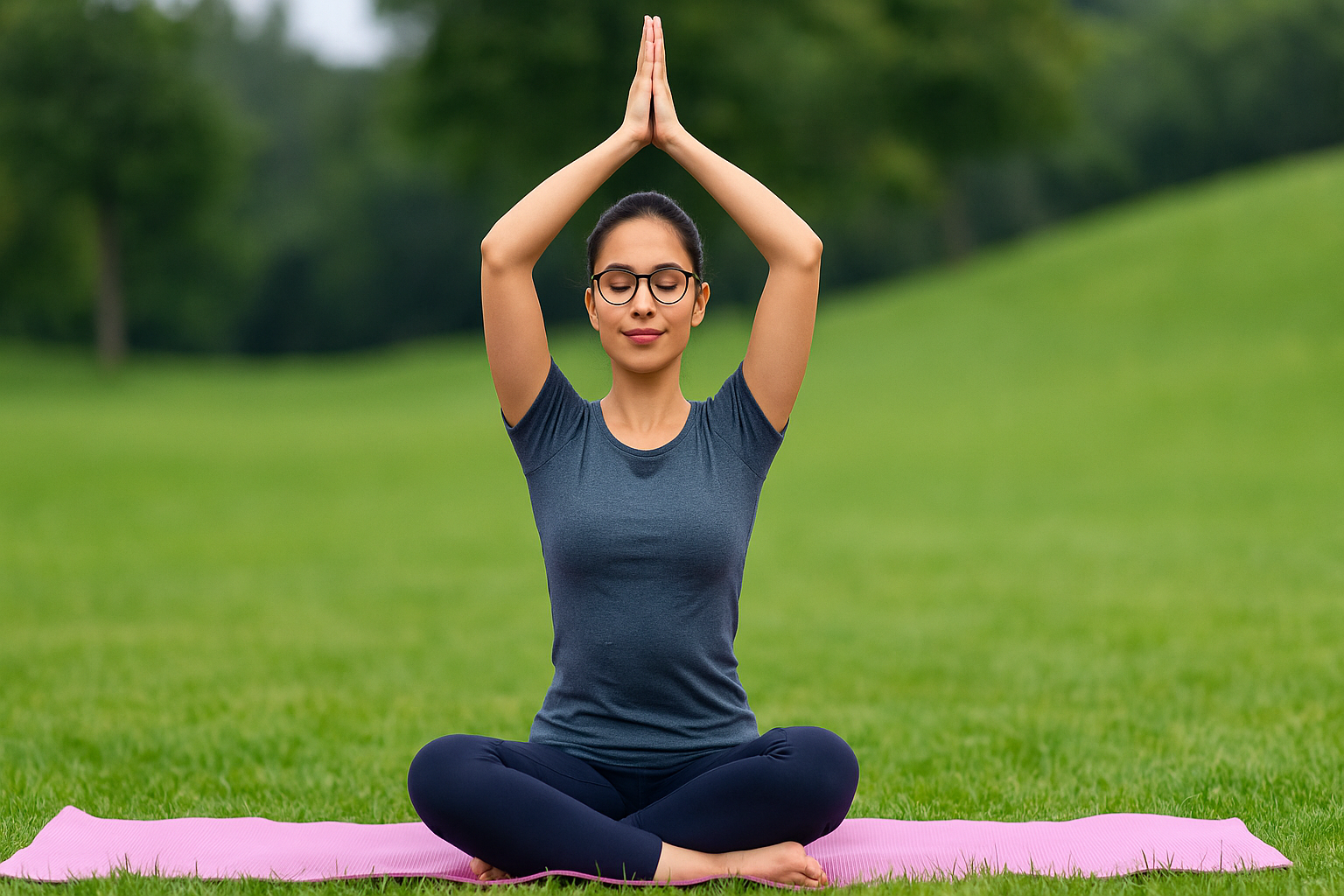
Can Yoga Improve Your Vision? Fact vs Fiction
Can Yoga Improve Your Vision? Fact vs Fiction
With rising screen time, urban stress, and digital fatigue, many people are turning to yoga and holistic wellness to take care of their eyes. One of the most frequently asked questions we hear at Urmil Eye Hospital is “Can yoga actually improve eyesight?” It’s a fascinating blend of tradition and science. Let’s separate fact from fiction and explore what yoga can and cannot do for your eyes.
What Yoga Cannot Do
Let’s be clear—yoga cannot reshape your cornea, heal cataracts, or cure retinal diseases. It’s not a substitute for medical treatment, corrective lenses, or surgery. Conditions like:
● Myopia, hyperopia, astigmatism
● Cataracts
● Diabetic retinopathy
● Age-related macular degeneration …require professional diagnosis and care from qualified eye doctors.
What Yoga Can Help With
● Reducing digital fatigue and dry eye
● Improving focus and eye comfort
● Lowering stress-related vision fluctuations
● Enhancing your connection to body awareness, including your eyes Think of yoga as a supportive wellness practice, not a miracle cure.
Safe Eye Yoga Tips from Urmil Eye Hospital
● Do short palming sessions after long screen exposure
● Practice Trataka (candle gazing) in moderation to improve focus—not for hours
● Try slow blinking and eye movements during breaks
● Include breathing exercises like Anulom Vilom to calm the nervous system
● Stay hydrated and eat eye-friendly foods (leafy greens, carrots, omega-3s) And most importantly, never skip your annual eye check-up—especially if you’re over 40 or have underlying conditions like diabetes or hypertension. Yoga is powerful—but like all healing practices, it works best when balanced with science. While it won’t change your prescription, it can support your eye comfort, relaxation, and long-term visual well-being.
So roll out that mat, blink mindfully, and take a deep breath not just for your body, but for your eyes too. Because true vision care is both physical and mindful.
The Belief: Yoga for Better Vision
For centuries, yoga has promoted inner harmony, physical strength, and mental clarity. Some yogic texts and wellness coaches also advocate “eye yoga” to enhance eyesight. These practices include:
● Palming (rubbing hands together and cupping over closed eyes)
● Trataka (candle gazing to improve focus)
● Blinking exercises
● Eye rotations and shifts
● Breathing techniques (Pranayama)
● Face yoga and acupressure points around the eyes
Proponents claim these can strengthen eye muscles, reduce fatigue, and even eliminate the need for glasses.
But how much of it is actually backed by science?
The Science: What Research Says
There is limited clinical evidence that yoga can directly correct refractive errors (like myopia or hyperopia). If you’re nearsighted or farsighted, yoga won’t replace glasses or contact lenses. However, several studies and clinical experiences do support indirect benefits of yoga for eye health:
1. Reduces Digital Eye Strain
Regular blinking, palming, and short breaks through yogic routines can ease symptoms like dry eyes, headaches, and blurred vision—common in screen heavy lifestyles.
2. Improves Blood Circulation
Inverted poses like Sarvangasana (shoulder stand) and gentle breathing exercises promote oxygen flow to the head and eyes. This may support healthier retinal function over time.
3. Lowers Eye Pressure in Glaucoma
Some forms of pranayama and gentle yoga have shown to help reduce intraocular pressure in glaucoma patients—when practiced under medical supervision.
4. Relieves Stress and Tension
Vision can be affected by prolonged stress. Yoga reduces cortisol levels, calms the nervous system, and may indirectly enhance how you perceive and respond to visual stimuli.
5. Supports Overall Eye Comfort
Less fatigue, better focus, and more mindful use of vision are definite plus points when yoga is integrated into daily routine.


